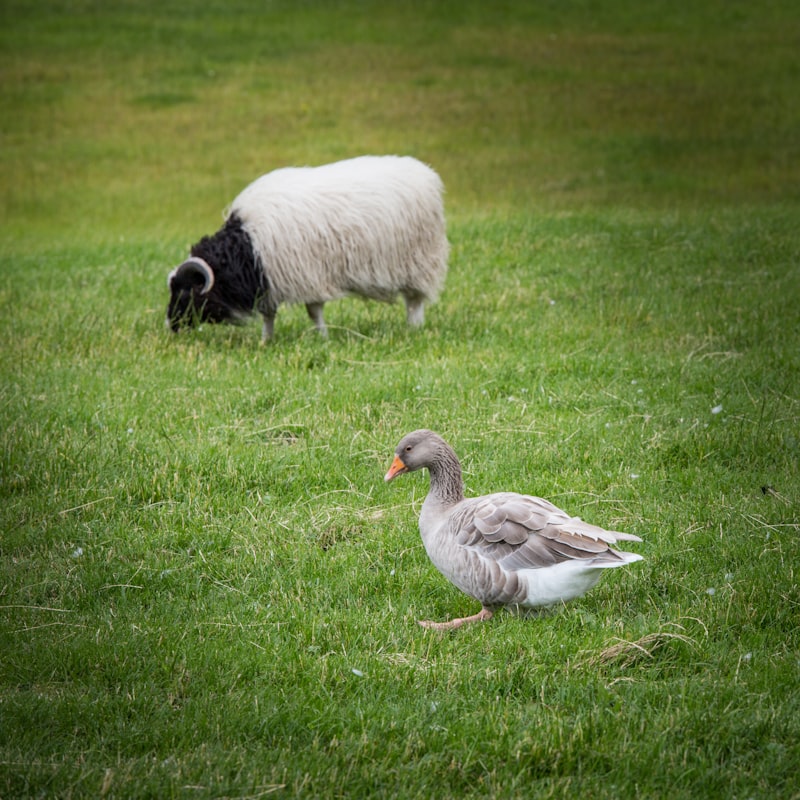Have you ever wondered about the weirdest creatures that roam our planet? From the depths of the oceans to the densest rainforests, nature has crafted some truly bizarre animals that seem straight out of science fiction. Let’s dive into the fascinating world of the strangest animals you’ve probably never heard of.

Ever heard of the Aye-aye? This peculiar lemur from Madagascar looks like a cross between a bat and a rodent. With its large eyes, bushy tail, and elongated middle finger used for tapping and finding grubs inside trees, the Aye-aye is both eerie and intriguing.
Moving on to the Pink Fairy Armadillo, it’s as enchanting as its name suggests. Residing in the sandy plains of Argentina, this miniature armadillo sports a delicate pink shell and is known for its ability to bury itself swiftly into the ground when threatened, resembling a fantastical creature from a fairy tale.
Did you know there’s a fish that walks? Meet the Indian Purple Frog, which prefers to hop and walk rather than swim. Found in the Western Ghats of India, this amphibian is known for its bulbous body and pointy nose, making it appear almost comical yet endearing.
Venturing into the ocean, we encounter the Dumbo Octopus. Named after the Disney character, this deep-sea inhabitant has large fins resembling elephant ears, allowing it to gracefully glide through the water. Its unique appearance and gentle movements make it a mesmerizing sight for deep-sea explorers.
Imagine a creature that looks like a mix between a horse and a zebra but is actually related to giraffes. That’s the Okapi for you, found in the dense rainforests of the Democratic Republic of Congo. With its striped hindquarters and long neck, the Okapi is often referred to as the “forest giraffe,” blending into its environment with remarkable camouflage.
Nature’s creativity knows no bounds when it comes to designing these extraordinary creatures. Each one tells a story of adaptation and survival in the most unexpected ways. As we uncover more about these animals, we continue to marvel at the wonders of our natural world.
10 Bizarre Creatures From Around the Globe That Defy Imagination
Ever wondered about the creatures lurking in the far corners of our planet? Nature has a way of surprising us with its diversity, often presenting creatures that seem straight out of a fantasy novel. From deep sea abysses to dense rainforests, here are 10 bizarre creatures from around the globe that defy imagination.
-
Axolotl (Mexico): Known as the “walking fish,” this amphibian retains its larval features throughout its life, making it a unique sight in Mexican lakes.
-
Blobfish (Australia, New Zealand): Found in the deep waters off the coasts of Australia and New Zealand, the blobfish’s gelatinous appearance is a result of its adaptation to high-pressure environments.
-
Narwhal (Arctic): Often called the “unicorn of the sea,” the narwhal’s long, spiraled tusk protruding from its head serves mysterious purposes in Arctic waters.
-
Okapi (Democratic Republic of Congo): Resembling a mix between a zebra and a giraffe, the okapi’s elusive nature in the dense rainforests of Central Africa adds to its allure.
-
Mantis Shrimp (Tropical Oceans): With eyes capable of seeing polarized light and limbs that strike with the speed of a bullet, the mantis shrimp is a formidable predator in tropical waters.
-
Aye-aye (Madagascar): This nocturnal primate uses its elongated middle finger to tap on trees and extract insects, making it both strange and fascinating.
-
Sunda Colugo (Southeast Asia): Also known as the flying lemur, this creature glides effortlessly between trees using a membrane stretched between its limbs, resembling a furry kite in flight.
-
Goblin Shark (Deep Sea): Found in the depths of the ocean, the goblin shark’s elongated snout and protruding jaws are adapted for catching prey in low-light conditions.
-
Blue Dragon (Ocean): A small sea slug that floats upside down on the ocean’s surface, the blue dragon’s vibrant blue color serves as both camouflage and a warning to predators.
-
Japanese Spider Crab (Japan): With legs spanning up to 12 feet, the Japanese spider crab is the largest arthropod in the world, inhabiting the depths of the Pacific Ocean.
These creatures remind us of the endless wonders our planet holds, each adapted uniquely to its environment. Exploring their peculiarities sparks a sense of curiosity and awe, showcasing nature’s creativity in full display.
Unveiling Nature’s Oddities: Meet These 10 Truly Unique Animals
Nature never ceases to surprise us with its incredible diversity, especially when it comes to the animal kingdom. From deep sea creatures to those found in the densest rainforests, there are some truly unique animals that capture our imagination and defy our expectations. Let’s delve into the fascinating world of these 10 extraordinary creatures that showcase the marvels of evolution.
-
Axolotl: Known as the “Mexican walking fish,” this amphibian retains its larval features throughout its life, making it an evolutionary anomaly.
-
Okapi: Resembling a cross between a zebra and a giraffe, the okapi is native to the dense rainforests of Central Africa, characterized by its striking striped legs.
-
Sunda Colugo: Also known as the flying lemur, despite not being a lemur nor capable of true flight, it glides gracefully through the treetops of Southeast Asia.
-
Mantis Shrimp: Possessing one of the most complex visual systems in the animal kingdom, these crustaceans can see polarized light and have unparalleled color vision.
-
Aye-Aye: Found in Madagascar, this nocturnal primate uses its elongated middle finger to tap on trees, listening for grubs inside—a unique feeding behavior.
-
Narwhal: Dubbed the “unicorn of the sea,” the narwhal sports a long, spiraled tusk protruding from its head, believed to play a role in echolocation and mating rituals.
-
Yeti Crab: Discovered in the South Pacific Ocean, this crustacean is notable for its blonde, hairy pincers—a feature that earned it the nickname “yeti.”
-
Fossa: Native to Madagascar, this carnivorous mammal resembles a blend of a cat and a mongoose, featuring retractable claws and a slender body built for agility.
-
Blobfish: Inhabiting the deep waters off Australia and New Zealand, this gelatinous fish appears quite different from its more recognizable relatives due to its lack of muscle structure.
-
Mimic Octopus: Master of disguise, this cephalopod can mimic the appearance and behavior of other marine species, including lionfish, flatfish, and even sea snakes.
Each of these animals not only showcases the ingenuity of nature but also reminds us of the endless possibilities of adaptation and survival. They continue to intrigue scientists and nature enthusiasts alike, offering glimpses into the vast tapestry of life on Earth.
Discover the World’s Most Unusual Wildlife Species You Didn’t Know Existed
Have you ever wondered about the extraordinary creatures that roam our planet? Beyond the familiar lions and elephants, there exists a realm of wildlife so bizarre and unique that they seem straight out of a science fiction novel. Let’s embark on a journey to uncover some of the world’s most unusual wildlife species that you probably didn’t know existed.
Imagine a tiny creature that resembles a leaf but is actually a living insect — the leaf-tailed gecko. Found in Madagascar, these geckos have evolved uncanny camouflage resembling dead leaves, allowing them to blend seamlessly into their surroundings. Their ability to mimic foliage is not just for show; it helps them evade predators and surprise prey with deadly precision.
In the depths of the Amazon rainforest, another marvel awaits — the pink river dolphin. Unlike its ocean-dwelling counterparts, this freshwater mammal boasts a striking pink hue and a long, flexible neck. It’s not just their appearance that sets them apart; they possess a remarkable intelligence, navigating through murky waters and communicating through a series of clicks and whistles.
Venture into the ocean’s depths, and you might encounter the blanket octopus, a creature known for its stunning yet bizarre defense mechanism. The female blanket octopus can unfurl a large, flowing cape of skin that resembles a blanket, intimidating predators and asserting dominance in the deep blue.
Ever heard of an animal that looks like a cross between a rabbit and a kangaroo? Meet the tree kangaroo, a native of Papua New Guinea. These arboreal marsupials have adapted to life in the treetops, using their strong hind legs and gripping tails to navigate the dense rainforest canopy.
From the tiny yet mighty mantis shrimp with its extraordinary vision to the axolotl, a salamander that retains its larval features throughout its life, the world is teeming with creatures that defy our expectations and expand our understanding of biodiversity.
As we continue to explore and protect our planet’s natural wonders, let us marvel at the resilience and diversity of these extraordinary species. Each one has a unique story to tell, reminding us of the endless possibilities of life on Earth.
From Deep Sea Dwellers to Hidden Rainforest Beasts: 10 Weird Animals Revealed
Ever wondered about the extraordinary creatures lurking in the depths of our planet? From the mysterious abyss of the deep sea to the dense canopies of remote rainforests, nature has crafted some truly bizarre animals that defy imagination. Let’s dive into the world of these unique beings.
-
The Anglerfish: Found in the deep ocean, this fish uses a bioluminescent lure to attract prey in the darkness, a strategy that seems straight out of a science fiction movie.
-
The Aye-Aye: Native to Madagascar, this nocturnal primate sports a slender middle finger used to tap on trees, locating tasty grubs hidden inside.
-
The Platypus: Found in Australia, this mammal lays eggs and sports a duck-like bill, making it a strange amalgamation of features from different species.
-
The Yeti Crab: Dwelling near hydrothermal vents on the ocean floor, this crustacean is covered in silky white hairs, resembling the mythical Yeti.
-
The Axolotl: Native to Mexico, this amphibian retains its larval features throughout its life, including external gills, giving it an almost alien appearance.
-
The Star-Nosed Mole: Found in North America, this mole uses its unique star-shaped nose with 22 fleshy appendages to identify and catch prey underwater.
-
The Saiga Antelope: Inhabiting the Eurasian steppes, this antelope has a distinctive, oversized nose that helps filter dust during the dry summers and warm air during the freezing winters.
-
The Goblin Shark: Living in deep waters worldwide, this shark’s elongated snout and protrusible jaws give it a frightening appearance, perfectly suited for catching prey in the dark depths.
-
The Kakapo: Native to New Zealand, this flightless parrot is the world’s heaviest and can live up to 90 years, known for its gentle demeanor and owl-like face.

The Pink Fairy Armadillo: Residing in the deserts of Argentina, this tiny armadillo sports a flexible, pink armored shell and burrows underground to escape predators.
Each of these creatures showcases the marvels of evolution and adaptation, reminding us of the diversity and wonder that exist within our natural world. Explore more about these fascinating animals and uncover the secrets they hold about our planet’s rich biodiversity.
Beyond the Ordinary: Exploring Earth’s Most Peculiar Animal Kingdom
Welcome to a journey into the fascinating realm of Earth’s most peculiar creatures. From the depths of the ocean to the dense rainforests and even our own backyards, the animal kingdom boasts an astonishing diversity that never fails to captivate. Imagine encountering a creature that glows in the dark or one that can change its gender at will. These are just a glimpse into the extraordinary adaptations that evolution has gifted to some of our planet’s inhabitants.
In the mysterious depths of the ocean, creatures like the anglerfish lure prey with a bioluminescent glow, a tactic as effective as it is mesmerizing. Moving onto land, the axolotl, often referred to as the “walking fish,” possesses a remarkable ability to regenerate its limbs, a trait that has fascinated scientists for decades. Meanwhile, the platypus, a unique mammal native to Australia, lays eggs despite being warm-blooded, blending characteristics from both mammals and birds.
Venturing into the rainforest, one encounters the surreal spectacle of the mantis shrimp, a creature with incredibly complex eyes capable of perceiving polarized light and a punch that accelerates faster than a speeding bullet. On a smaller scale, the tardigrade, or water bear, is renowned for its ability to survive extreme conditions, including the vacuum of space and pressures six times greater than those found in the deepest oceans.
Closer to home, the hummingbird moth exhibits a remarkable mimicry of its avian namesake, hovering mid-air while sipping nectar from flowers. Meanwhile, the axolotl, often kept as a pet, continues to fascinate with its eternal smile and the ability to regenerate its limbs.
Each of these creatures represents a testament to the ingenuity of nature, showcasing adaptations that defy imagination and push the boundaries of what we know about life on Earth. As we continue to explore and understand these marvels, one thing remains certain: the animal kingdom’s diversity never ceases to amaze, offering endless opportunities for discovery and wonder.
Frequently Asked Questions
Why are some animals so uniquely adapted to their habitats?
Discover why certain animals possess unique adaptations to their environments. This concise FAQ explores how natural selection shapes physical traits to optimize survival in specific habitats.
Where can I find more information about bizarre animal species?
Discover more about unusual animal species by exploring specialized websites, natural history museums, and wildlife documentaries. These sources offer in-depth information and captivating visuals to expand your knowledge on unique creatures.
How do these unusual animals adapt to their environments?
Learn how unique animals adapt to their surroundings with our concise guide. Discover their fascinating strategies for survival and thriving in diverse habitats.
Which strange animals are endangered and why?
Discover which unusual animals are currently endangered and understand the reasons behind their declining populations. This FAQ provides clear insights into lesser-known species facing threats to their survival, highlighting the importance of conservation efforts.
What are some examples of the weirdest animals discovered recently?
Discover some of the most bizarre creatures found in recent years with our list of examples showcasing the weirdest animals discovered recently.


